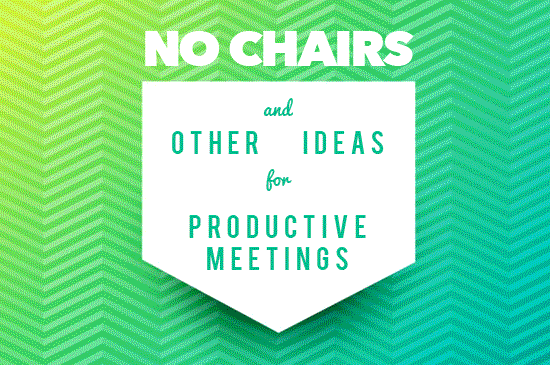Skift Take
Let me tell you – everyone hates meetings. If you asked a random group of employees if they enjoyed their work meetings, the resounding “No!” could probably break through the space-time continuum.
But why do people dislike meetings so much?
The real answer is because they aren’t usually very functional. In fact, the term “business meeting” conjures mental images of a group of bored people, trapped in a windowless room for an hour with stale donuts.
It doesn’t have to be this way. Meetings do actually have the power to be extremely powerful methods of communication that allow businesses and organizations to solve problems, encourage team spirit, generate ideas, and call others to action. There are several ways that you can take the tired, boring business meeting, and transform it into a powerhouse of productivity.
Don’t Have A Meeting
The best meeting of all time is the one that never happened. Before you send out that Outlook meeting reminder, take the time to decide if you actually need to have a meeting.
The only reason to have a meeting is that there is a question that several people need to weigh in on in order to get an answer. If you can shoot off a few emails, and follow up with a phone call to answer your question, you do not need to have a meeting. Part of the reason meetings have such a terrible reputation in the workplace is because they often never needed to happen.
Also take into consideration that there are several digital ways to collaborate on a project without sitting in the same room. Working in a shared Evernote for work folder, or a Google Doc can help eliminate the need for meetings. There are also lots of project management software options available that can help to streamline and digitize the meeting process.
Cut The Time
A meeting does not have to be an hour long affair. In fact, there is some evidence that supports the idea that people’s attention spans are so short and limited, that if you’re having a meeting longer than a half hour, you’re pretty much talking to yourself. There is no productivity in droning on endlessly into a room full of people who aren’t listening.
Give your meeting a very strict time limit. The shorter your meeting, the more likely you are to actually cover all the topics you need to.
Get Rid Of The Chairs
Having a meeting standing up is a great idea. We spend a lot of time seated behind our desks. Sometimes the simple act of standing up, forces people to pay attention, be concise, and listen attentively.
The change of pace will also help your team to come up with innovative and interesting ways to tackle the problems on your meeting agenda.
Go For A Walk
Similar to the logic behind having a standing meeting, taking your meeting out of the office is a great way to boost productivity. I once participated in a pre-lunch meeting where attendees walked from the office to a local restaurant. The meeting participants tossed a brightly colored ball back and forth in order to let everyone know who was speaking at the time and who would be speaking next.
The physical elements of paying attention to the ball, and walking down the street, really forced me (and the other meeting attendees) to pay attention to what was going on. In addition, everyone was having so much fun, and was so eagerly anticipating our lunch together afterward, that each agenda item was discussed and dissected with verve.
Focus On Your Agenda
One tried and true method to having a truly productive meeting is in creating a killer meeting agenda. Take the time to create an agenda that goes into:
– What topics will be discussed at the meeting, by whom, and for how long. Sometimes I go as far as to rank each topic by order of importance.
– Who is coming to the meeting, what they will be asked to present/discuss, and what needs to be read/handled beforehand.
– What everyone’s roles at the meeting will be. This is different than explaining what each person will be presenting. Your meeting agenda should also explain who is in charge of taking minutes, handling food and beverage needs, and handing out/collecting/organizing any relevant documentation (be it physical paperwork, or digital documents).
– When and where the meeting will take place, and how long it is expected to last.
If you can craft a meeting agenda that hits on all of the above points, and then send it out within enough time for all meeting participants to read it and prepare accordingly, you will see a drastic improvement in your meeting productivity.
In Conclusion
The secret to productive meetings is having a good agenda, and keeping the experience fresh and innovative for participants. Make sure your meeting only includes people who truly need to be there, and covers topics that are actually relevant. And don’t forget that you can collaborate with people without sitting them down in the conference room.





